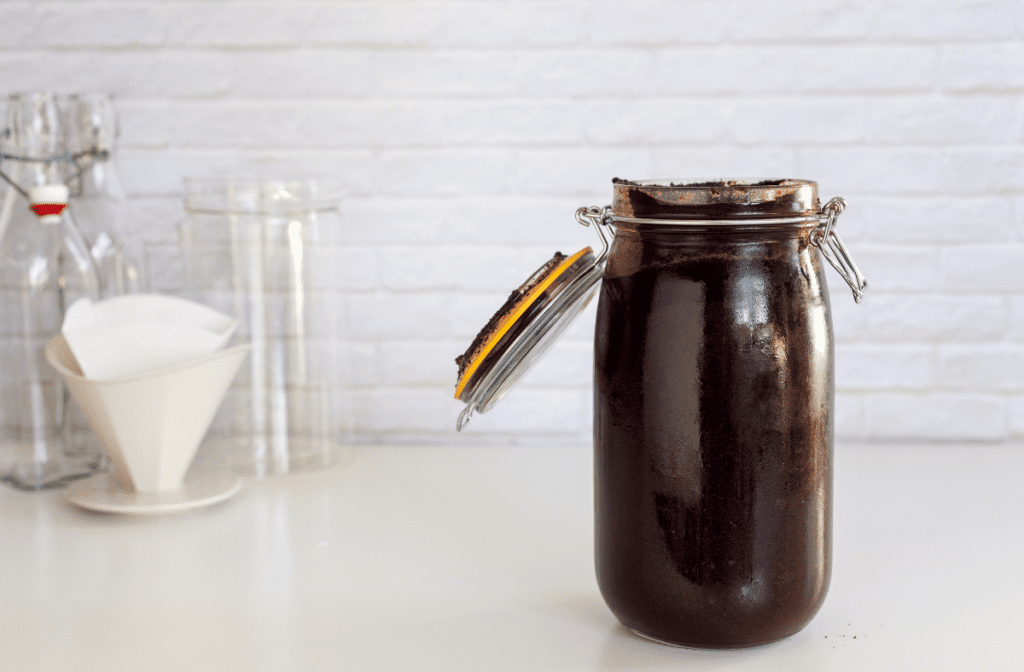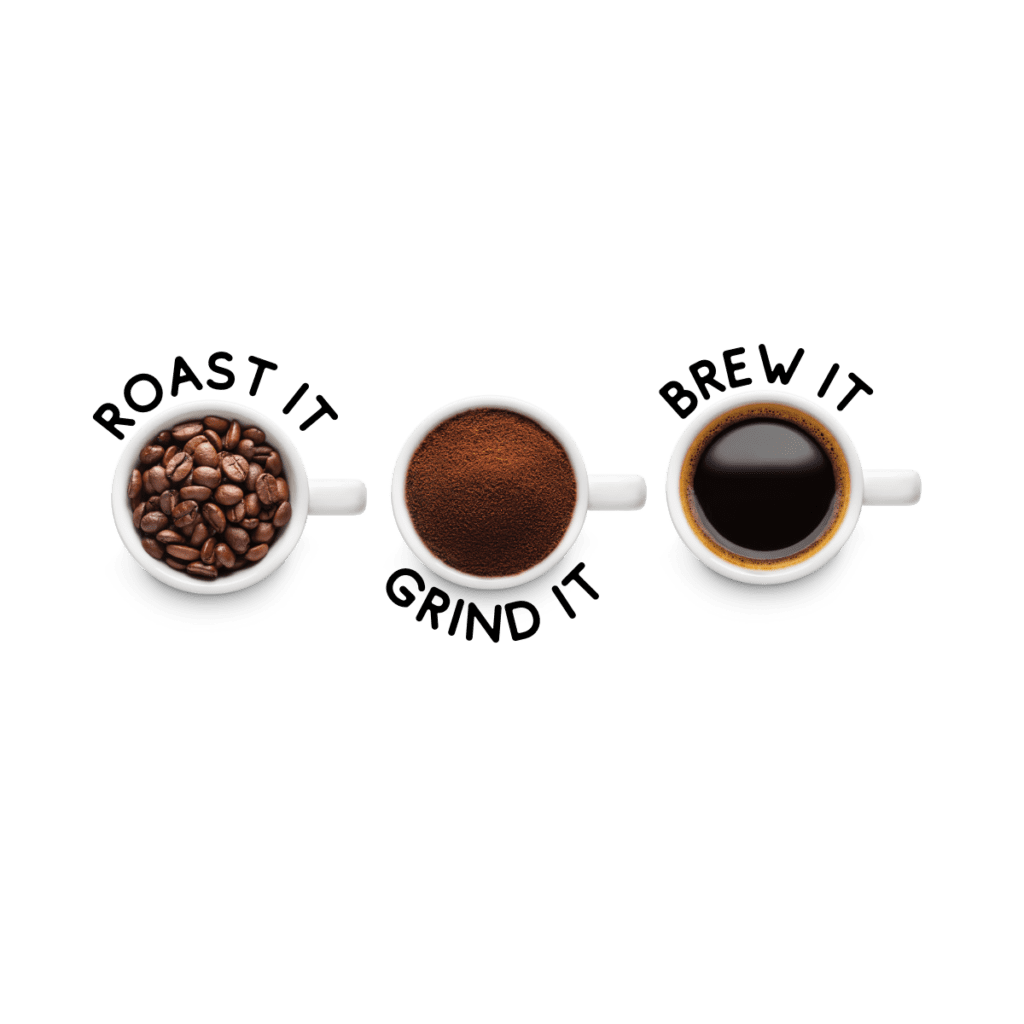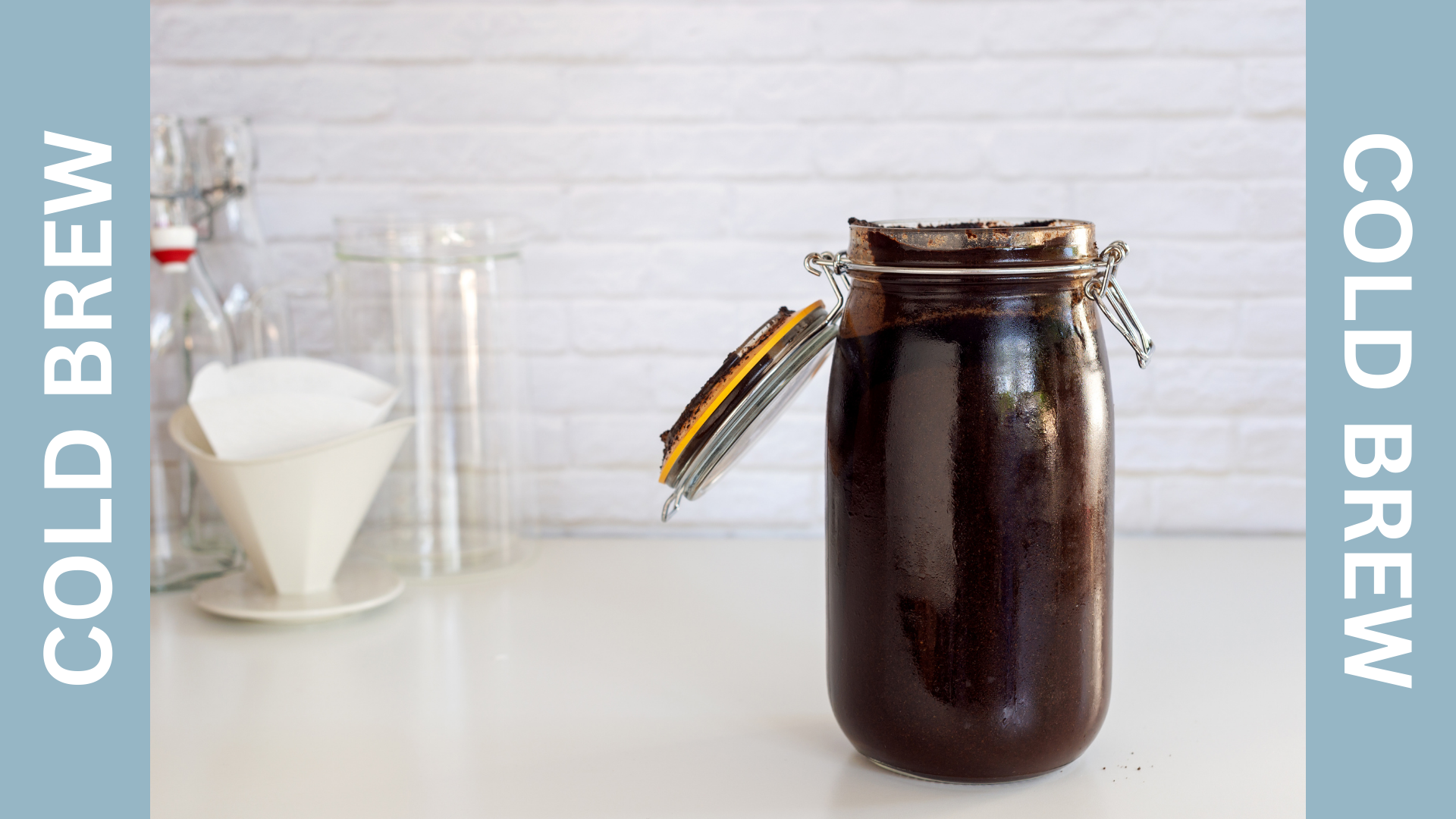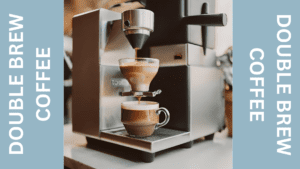
Welcome to the world of cold brew coffee – a realm where patience rewards you with a smooth, flavorful cup that’s perfect for any time of day. Whether you’re a beginner eager to try your first batch or a coffee enthusiast looking to refine your cold brew skills, this guide is for you. We’ll explore the art of making cold brew, the essential equipment, and how it differs from its cousin, iced coffee.
Disclaimer: Some of the links within this post are affiliate links which means if you click on our recommended products and decide that product is right for you, I may earn a commission on that purchase at no cost to you. As an Amazon Associate, I earn from qualifying purchases. All content and opinions remain my own.
Cold Brew Coffee At Home: The Only Guide You Need
Table of Contents
What is Cold Brew Coffee?
Cold brew coffee, unlike traditional coffee, is brewed with cold or room temperature water over an extended period, usually 12 to 24 hours. This process results in a coffee concentrate that is less acidic, smoother, and often sweeter than its hot-brewed counterpart.
Brewing Methods
The Art of Cold Brewing: A Step-by-Step Guide
Cold brew coffee offers a spectrum of flavors and strengths, largely influenced by the method and duration of brewing. Here, we delve into two popular methods: Immersion and Slow Drip, providing a detailed guide for each.
1. Immersion Method: Simplicity Meets Flavor
- Step-by-Step Process:
- Grind the Beans: Aim for a coarse grind, similar to breadcrumbs. This ensures optimal extraction and easy filtration.
- Mix with Water: In a jar or pitcher, mix the coffee grounds with cold or room-temperature filtered water. The standard ratio is 1:8 (coffee to water), but feel free to adjust according to your taste preference.
- Steep Overnight: Cover and let it steep at room temperature or in your refrigerator for 12-24 hours. The longer you steep, the stronger and more concentrated the flavor.
- Filtering: Once steeped, filter the mixture using a fine mesh strainer lined with cheesecloth or a coffee filter. This removes all the coffee grounds, leaving a smooth concentrate.
- Serving: Dilute the concentrate with water or milk to your liking. It’s typically served over ice but can also be enjoyed hot.
- Tips for Perfection:
- Experiment with Coffee Types: Different beans can dramatically change the flavor profile. Try a variety of beans to find your favorite.
- Consistency is Key: Keep your grind size and steeping time consistent for repeatable results.
2. Slow Drip Method: The Connoisseur’s Choice
- Step-by-Step Process:
- Setup: Assemble your drip brewer according to the manufacturer’s instructions. This usually involves adding ice and water to the top chamber and coffee grounds to the middle chamber.
- Adjust Drip Rate: Set the drip rate as recommended by the brewer’s guide. A slower drip rate (about 1 drop per second) usually yields a more robust flavor.
- Brewing Time: Brewing can take anywhere from 3 to 12 hours, depending on the drip rate and desired strength.
- Collect and Serve: The resulting brew is typically less concentrated than the immersion method and can be served directly over ice, with or without dilution.
- Tips for Perfection:
- Monitor the Drip: Adjust the drip rate if necessary during brewing to ensure consistency.
- Fine-tune the Grind: Experiment with slightly finer grinds than those used for immersion, as this can affect the extraction rate and flavor.
What’s The Difference – In A Nutshell?
- Immersion is ideal for those who prefer a straightforward, hands-off approach and enjoy a stronger, more full-bodied coffee.
- Slow Drip appeals to those who enjoy the ritual of brewing and the lighter, more nuanced flavors that this method can produce.
Essential Equipment
Crafting the perfect cup of cold brew coffee at home is an enjoyable process, and having the right equipment is key. This expanded section covers the essentials, offering insights into what to look for in each item.
For the Immersion Method: Simplified Brewing
- Mason Jars or Large Pitchers: Ideal for steeping your cold brew, these should be made of high-quality glass to avoid any flavor alteration. Look for ones with wide mouths for easy cleaning and pouring.
- Fine Mesh Strainer and Cheesecloth: Essential for filtering out coffee grounds. The mesh should be fine enough to prevent grounds from slipping through, and the cheesecloth should be durable and easy to clean.
- Optional: Immersion-Specific Brewers: For a more streamlined process, consider brewers like the Toddy Cold Brew System, Takeya Cold Brew, or the OXO Good Grips Cold Brew Coffee Maker. These are designed for immersion brewing and often include built-in filtration systems.
For the Slow Drip Method: Precision Brewing
- Cold Drip Brewers: These come in various sizes and styles. Key features to look for include:
- Adjustable Drip Rate: Allows for precise control over the brewing process.
- Quality Materials: Glass and stainless steel components are preferred for durability and flavor preservation.
- Ease of Cleaning: Ensure the brewer can be easily disassembled for cleaning.
- Popular Brands: Hario is renowned for its elegant design and consistent performance, while Mueller is more compact. Both units provide an experience worthy of pursuing.
Additional Equipment
- Coffee Grinder: For the freshest taste, grinding your beans just before brewing is crucial. Burr grinders offer the most consistent grind size, essential for even extraction in cold brewing. Check out the Baratza range of grinders. One of the world’s most popular brands with a range to cater to all levels of coffee enthusiasts.
- Kitchen Scale: Precision matters in cold brew. A digital scale allows for accurate measurement of coffee and water, leading to consistent results. There are plenty of scales available, choose one that suits your budget. The Hario V60 Drip scales are a popular choice with low latency, slim line design, and measurements of 0.1 grams.
Whether you prefer the straightforward immersion method or the nuanced slow drip approach, the right equipment can elevate your cold brew experience. From the basic setup of jars and strainers to more specialized cold brew systems and grinders, each piece of equipment plays a pivotal role in creating that perfect, refreshing cup.
Cold Brew vs. Iced Coffee

Cold brew and iced coffee are often mentioned in the same breath, but they are fundamentally different in preparation, taste, and chemical composition. This section will delve into these differences, offering a comprehensive understanding for both beginners and enthusiasts.
Brewing Process: Time and Temperature
- Cold Brew: It’s all about slow extraction at low temperatures. Coarse coffee grounds are steeped in cold or room-temperature water for an extended period, usually 12-24 hours. This method extracts flavors differently, resulting in a unique taste profile.
- Iced Coffee: Typically, iced coffee is just regular coffee brewed hot and then cooled down, either by being refrigerated or poured over ice. This process is much quicker and often completed in just a few minutes.
Taste and Flavor Profile
- Cold Brew: Known for its smooth, sweet, and mellow flavor. The cold brewing process reduces the extraction of bitter compounds and acids, leading to a less acidic cup. This method often highlights the chocolatey and nutty notes in coffee.
- Iced Coffee: Generally more acidic and brighter in taste compared to cold brew. It retains the characteristics of hot coffee, including the bitterness and aromatic profile, which can be more pronounced.
Acidity and Digestibility
- Cold Brew: Its lower acidity makes it a popular choice for those with sensitive stomachs or who experience acid reflux with traditional hot coffee.
- Iced Coffee: Higher acidity, similar to hot coffee, which can sometimes be harsher on the digestive system.
Caffeine Content
- Cold Brew: Despite its smooth taste, cold brew can pack a significant caffeine punch. The long steeping time and often higher coffee-to-water ratio result in a concentrated brew.
- Iced Coffee: The caffeine content is typically similar to that of regular hot coffee, varying based on the beans and brewing method used.
Customization and Versatility
- Cold Brew: Its concentrated form allows for easy customization. It can be diluted with water, milk, or even used in coffee-based recipes.
- Iced Coffee: Best enjoyed fresh and can be customized with milk, sweeteners, and flavorings. However, it may become diluted as the ice melts.
Understanding the differences between cold brew and iced coffee is key to choosing your preferred summer beverage. Whether you enjoy the smooth, sweet notes of cold brew or the bright, acidic profile of iced coffee, both offer unique and satisfying ways to enjoy coffee.
Tips for Perfection
Making cold brew coffee is both an art and a science. This expanded section is dedicated to providing you with advanced tips and techniques to help you refine your cold brew process, ensuring a delicious result every time.

1. Selecting the Right Coffee Beans
- Bean Type Matters: Experiment with different types of coffee beans to discover your preferred flavor profile. While medium and dark roasts are popular for cold brew due to their sweet and chocolatey notes, light roasts can offer delightful fruity and floral flavors.
- Freshness is Key: Use freshly roasted beans whenever possible. The fresher the beans, the more flavorful and aromatic your cold brew.
2. Grinding for Cold Brew
- Consistency in Grind Size: Aim for a coarse grind, similar to sea salt. This size allows for optimal extraction without over-extracting and becoming bitter.
- Grind Just Before Brewing: To ensure maximum freshness and flavor, grind your beans right before starting the brewing process.
3. Perfecting the Water-to-Coffee Ratio
- Standard Ratios: A good starting point is a 1:8 coffee-to-water ratio by weight. For a stronger brew, you might go as concentrated as 1:4.
- Adjust to Taste: Experiment with different ratios to find the strength and flavor that best suits your palate.
4. The Art of Steeping
- Time Matters: Steep time can significantly impact the flavor. While 12-24 hours is standard, some prefer as little as 8 hours, while others go beyond 24 hours for a deeper extraction.
- Temperature Considerations: Room temperature steeping often yields a balanced flavor, but refrigerated steeping can slow the extraction process, potentially leading to a smoother brew.
5. Filtration Techniques
- Fine Filtration: After the initial strain to remove the bulk of the grounds, consider a second filtration through a finer mesh or paper filter. This can help create a cleaner, sediment-free brew.
6. Storage and Shelf Life
- Storage: Store your cold brew concentrate in the refrigerator in a sealed container. This helps maintain freshness and flavor.
- Shelf Life: Properly stored, cold brew concentrate can remain fresh and tasty for up to two weeks, though the flavor may peak within the first week.
7. Serving Suggestions
- Diluting the Concentrate: Experiment with diluting your cold brew concentrate with water, milk, or even alternative milks to find your ideal balance.
- Creative Recipes: Cold brew can be used as a base for a variety of coffee beverages, from simple iced coffees to more elaborate coffee cocktails.
Crafting the perfect batch of cold brew is a rewarding experience. With these advanced tips and techniques, you’re well-equipped to experiment and find your personal cold brew preference. Remember, the beauty of cold brew lies in its versatility and the endless possibilities for customization.
Let’s Sum It Up
Cold brew coffee isn’t just a trendy summer drink; it’s a delightful method of coffee preparation that offers a unique taste experience. Whether you’re using the immersion or slow drip method, the right equipment can make all the difference. And remember, cold brew is more than just chilled coffee – it’s a smoother, more refined way to enjoy your daily caffeine fix.

Ready to start your cold brew journey? Check out our links for the best equipment and start experimenting with flavors and brewing times. Share your experiences and favorite recipes with us by contacting us and sign up for our newsletter for regular tips tricks and tech in your inbox. Also, check out our blog for all things brewing and tech. We are constantly adding new content so check back regularly!




